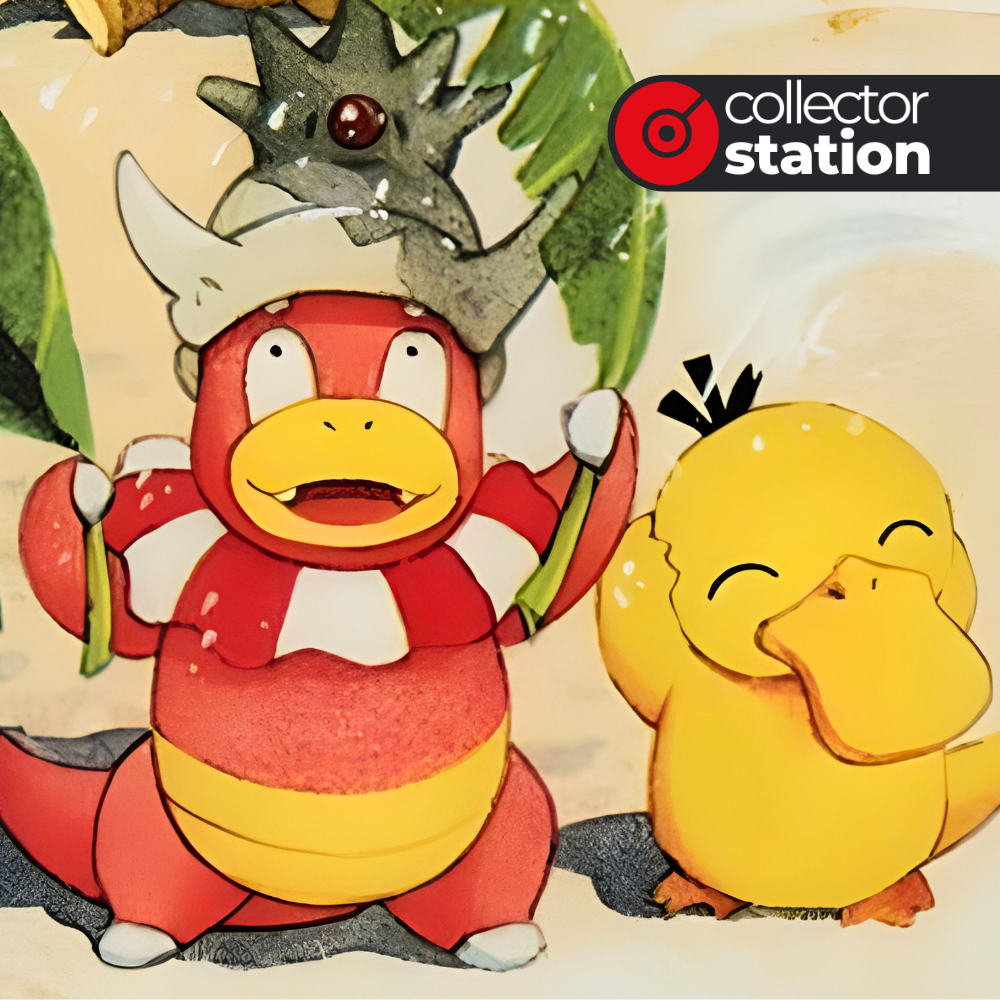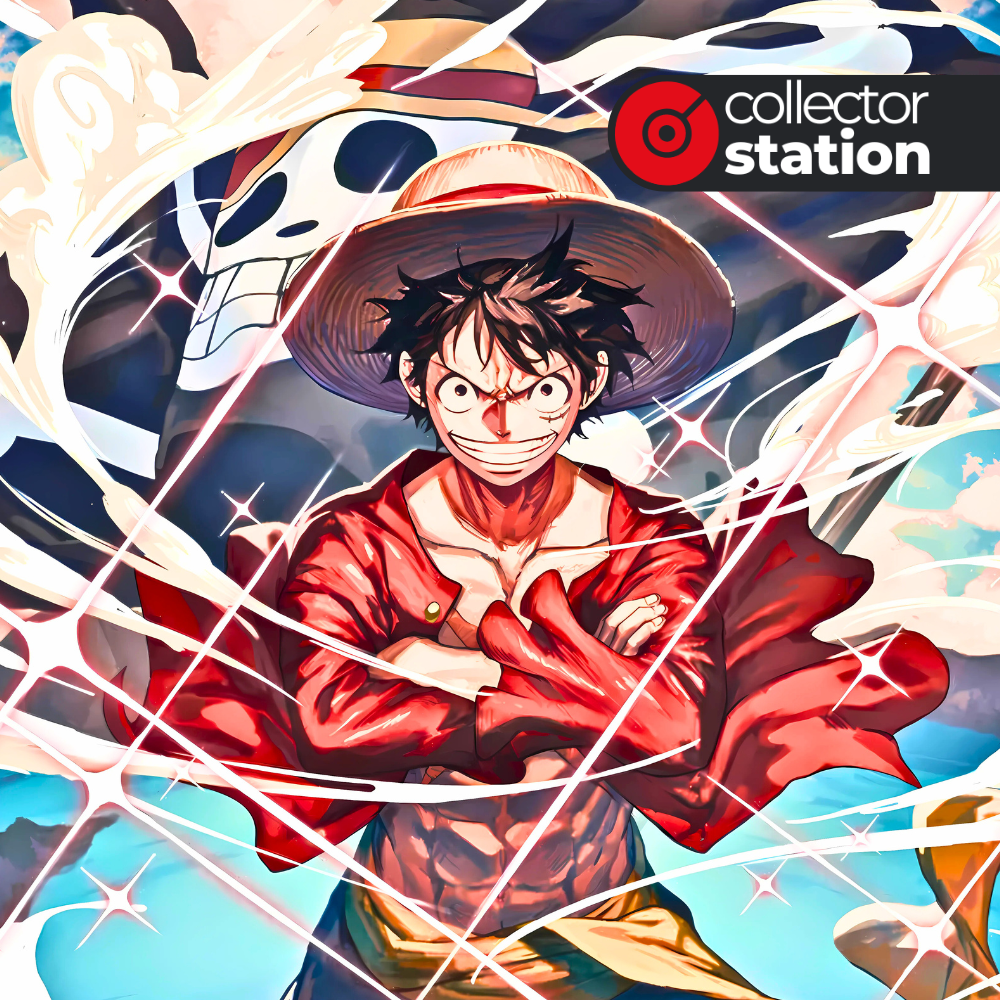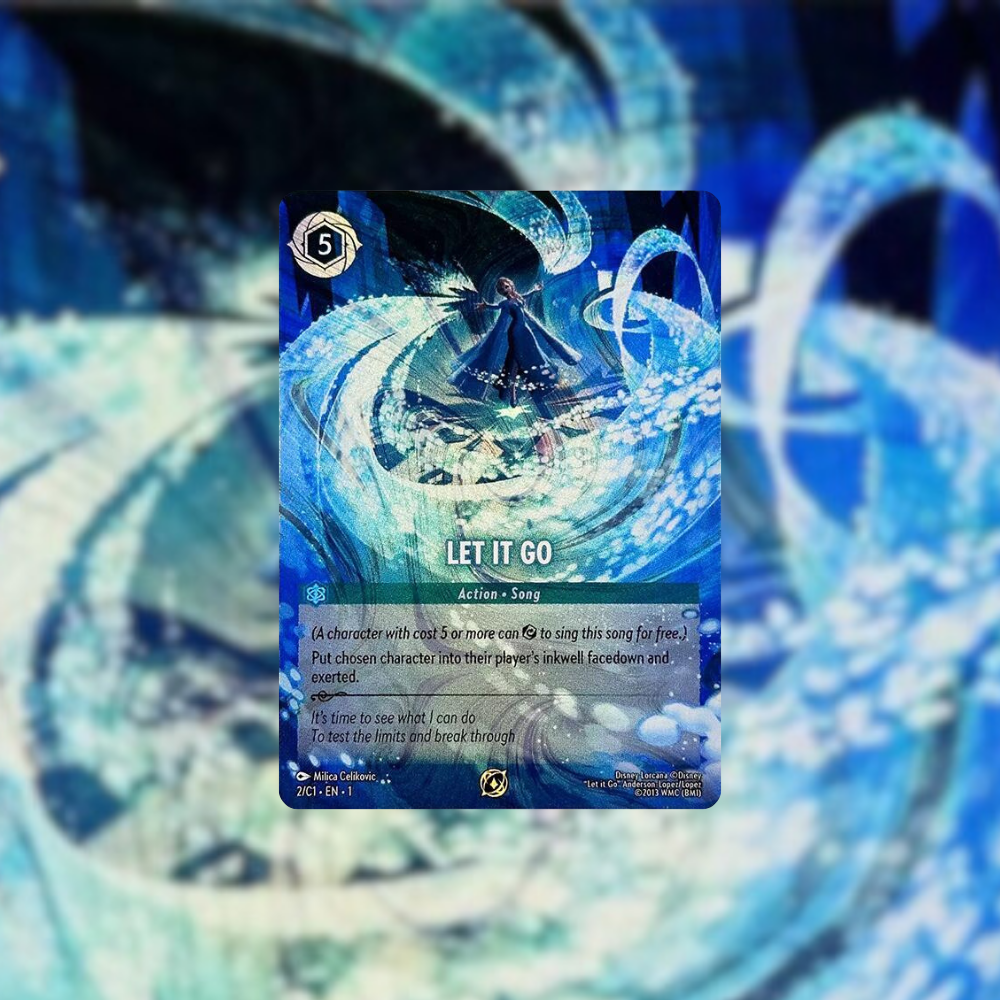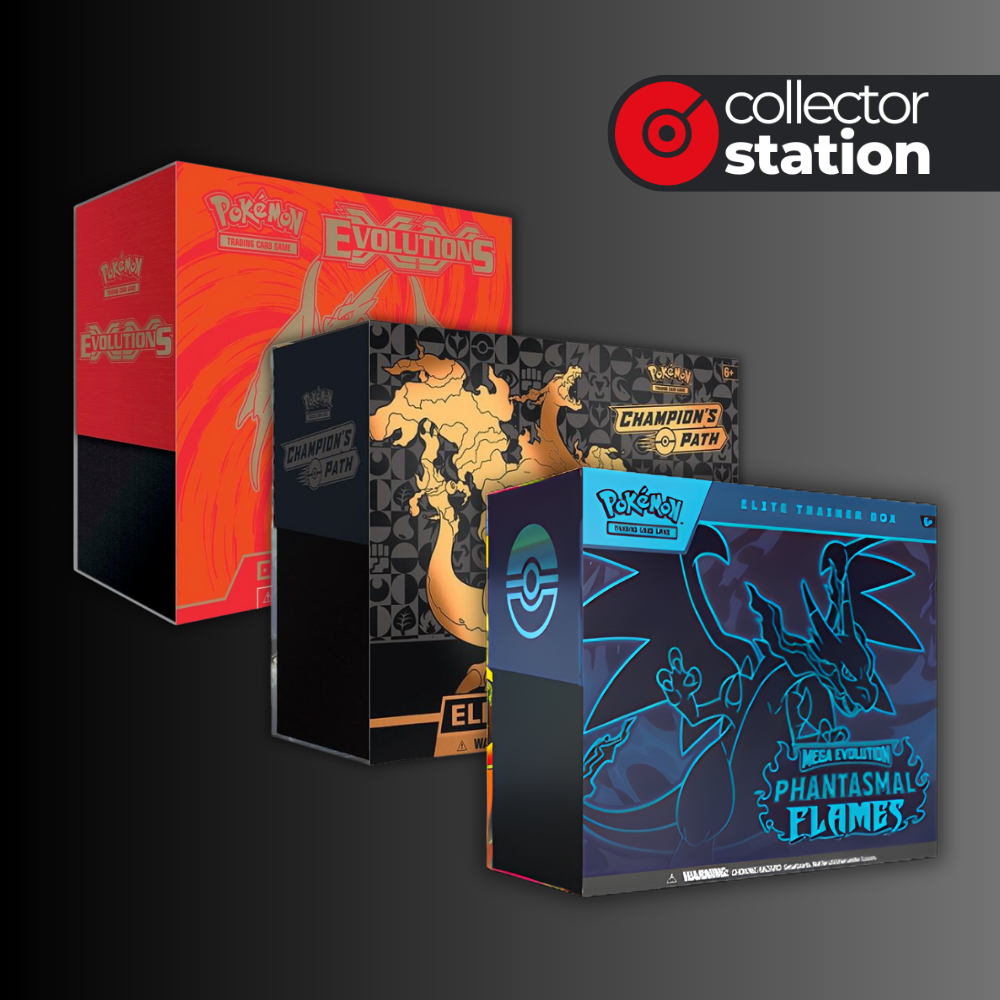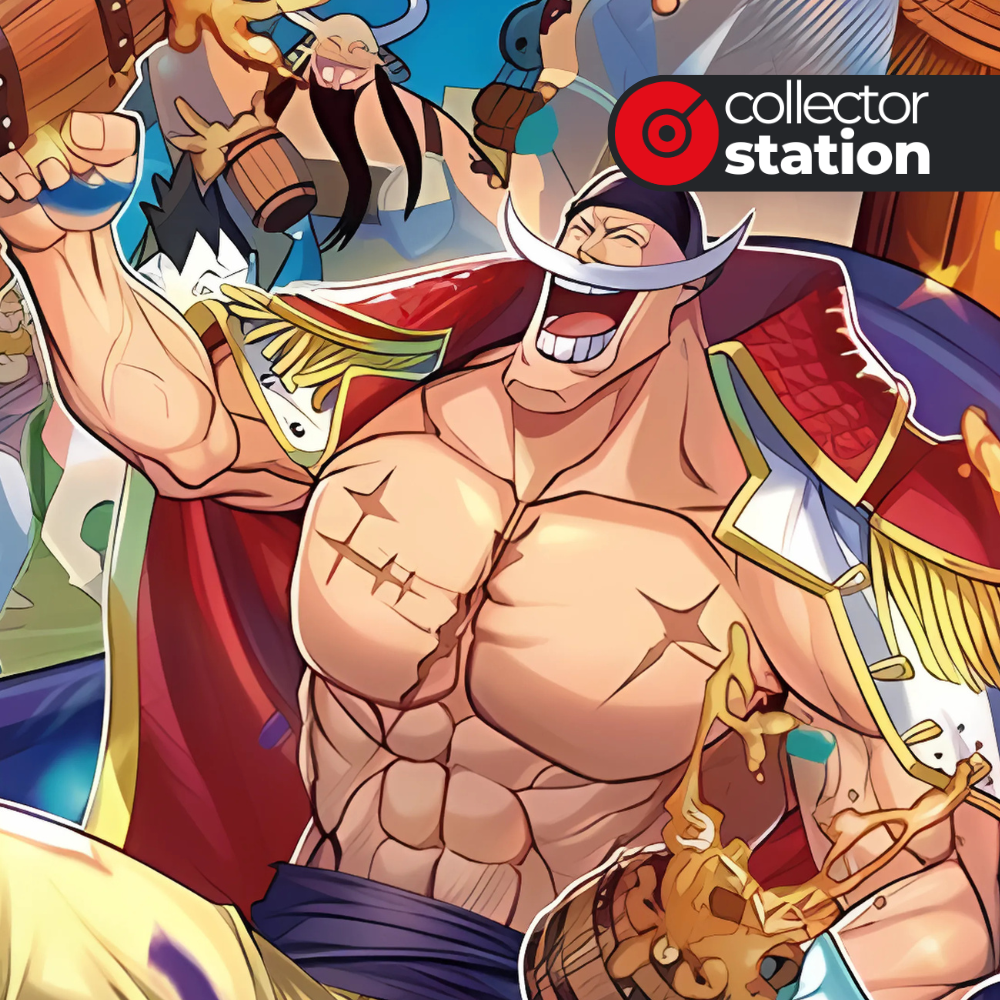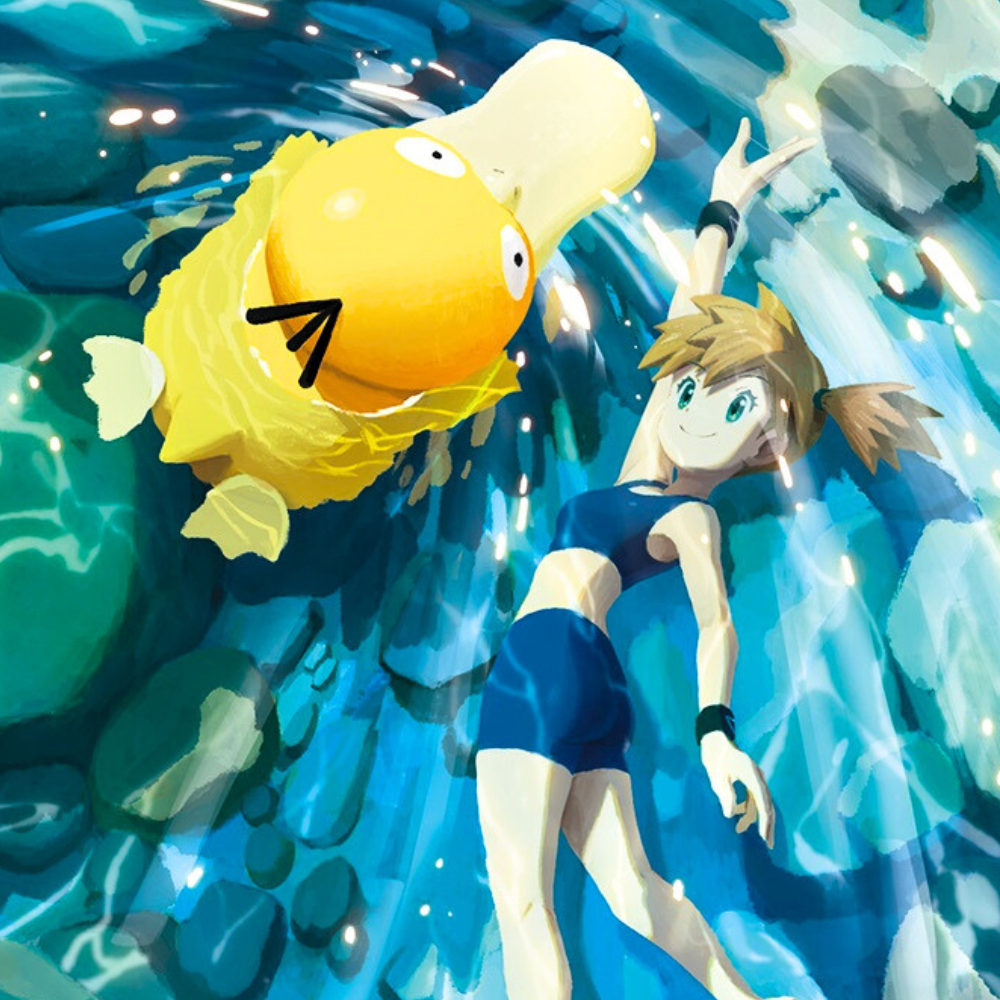The Pokémon Southern Islands Collection stands as one of the most elegant vintage releases from the late 1990s, prized for its postcard-style presentation and cohesive tropical artwork. Released in Japan in 1999 and later in English in 2001, the set contains only 18 cards, yet features iconic Pokémon like Mew, Lapras, and Togepi in serene, connected scenes. Each trio of cards forms a continuous illustration, a concept far ahead of its time for the Pokémon TCG.
Collectors value it not only for its artistic direction but also for its historical significance as one of the first products to showcase second-generation Pokémon outside the main sets. Sealed binders and complete sets have grown increasingly scarce, driving strong demand among vintage investors. With its blend of rarity, artistry, and nostalgic presentation, the Pokémon Southern Islands Collection has become a standout long-term investment piece for serious collectors.
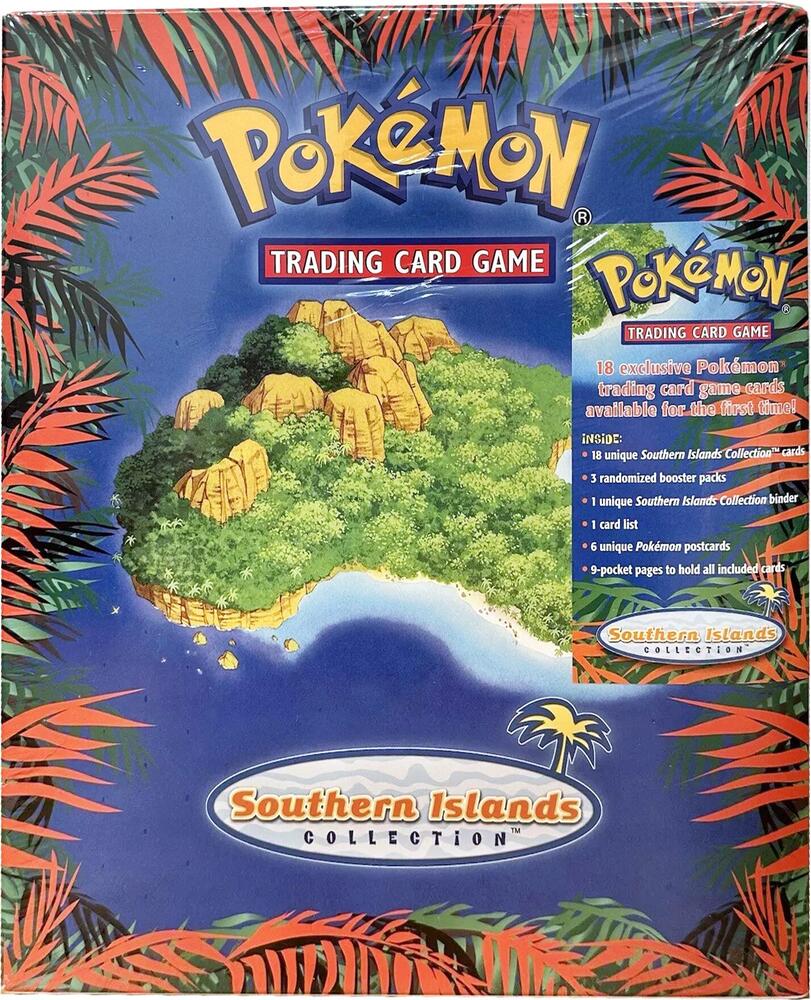
Why Pokémon Southern Islands Collection is A Great Vintage Set?
- Panoramic Artwork – Each card connects to form full tropical scenes, a groundbreaking design that celebrates Pokémon in natural environments rather than battle poses.
- Includes Early Gen 2 Pokémon – Features Togepi and Marill before the Neo Genesis era, marking their early debut for English collectors.
- Unique Release Format – Sold as postcards and collector folders instead of booster packs, giving it an art-gallery appeal rather than a standard TCG release.
- High Display and Investment Value – Sealed binders and PSA-graded sets have become premium collector items, appreciated for both rarity and aesthetics.
All 18 Pokémon Southern Islands Collection Cards
18. Raticate 06/18
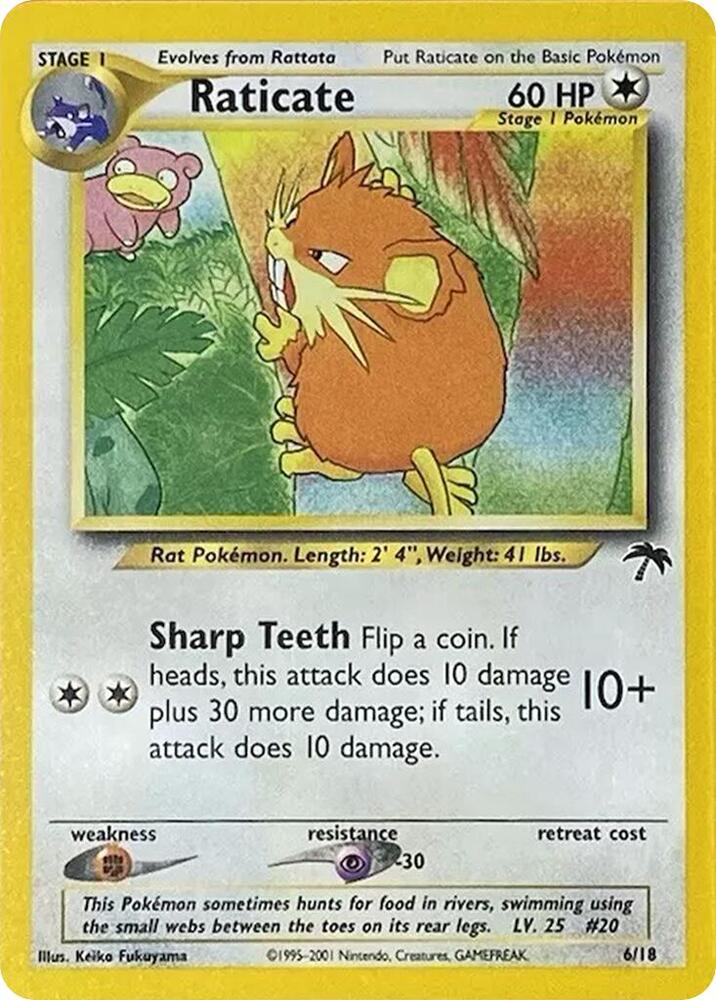
Raticate closes out the Tropical Island group, appearing mid-motion on a lush beachside scene. Its dynamic stance adds energy to the tranquil panorama, making it a strong visual anchor in the lower row of cards. This card highlights the attention to natural lighting and movement that defines the set’s art direction. It’s one of the few vintage Raticate prints that collectors chase specifically for display rather than gameplay.
17. Exeggutor 13/18

Exeggutor appears in a lively jungle setting with a bright tropical palette that perfectly captures the Southern Islands theme. Its large size and cheerful expression dominate the middle section of the Rainbow Island illustration. The card pairs beautifully with Lapras and Vileplume when arranged together in sequence. Graded versions have grown in value thanks to their crisp coloring and low print run.
16. Lickitung 16/18
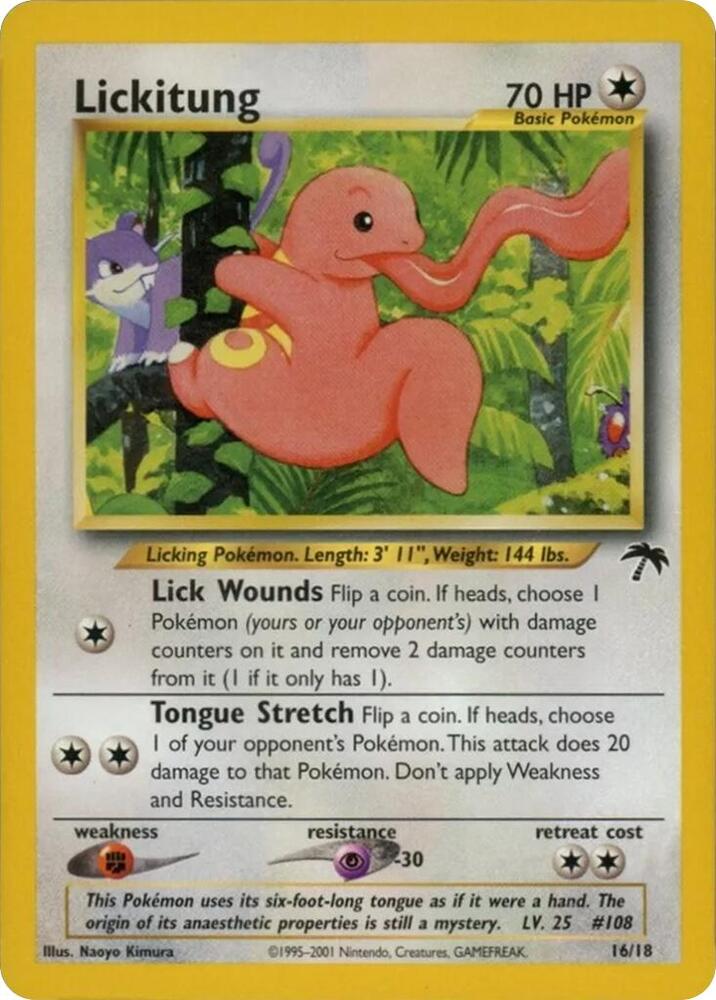
Lickitung’s playful presence among exotic plants gives this card a lighthearted appeal within the collection. It’s one of the few non-holo cards that still stands out visually because of its color contrast and central placement in the island layout. This card often suffers from surface wear due to its glossy printing, making high grades desirable. Collectors appreciate it for completing the relaxed, slice-of-life atmosphere of the set.
15. Primeape 18/18
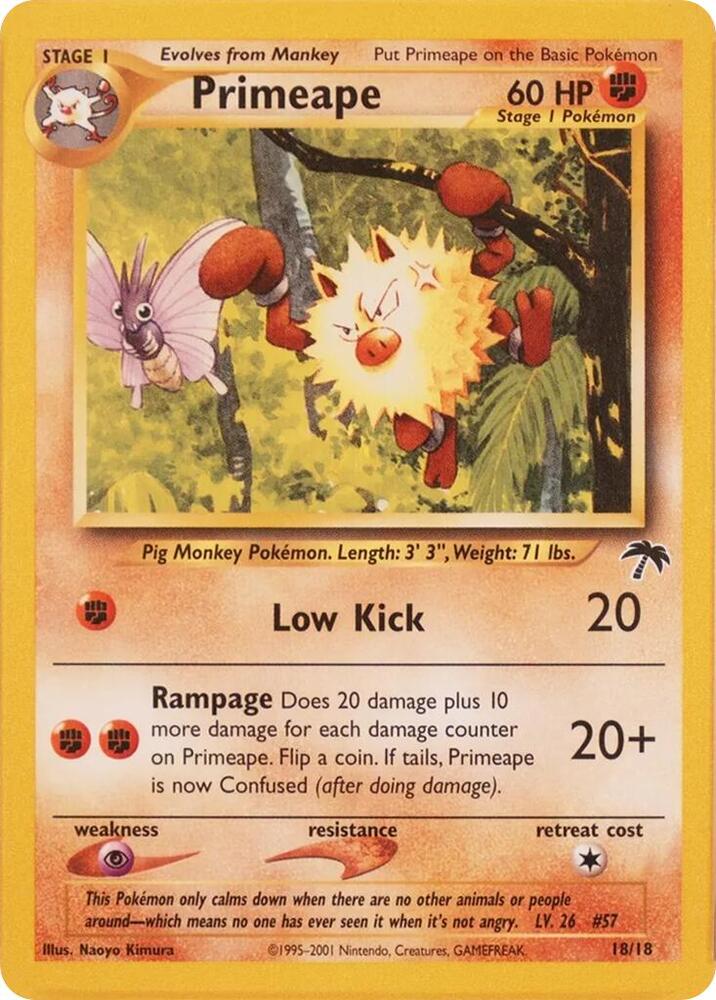
Primeape adds personality to the final card grouping, seen mid-leap with expressive energy that contrasts the otherwise calm environment. Its position within the artwork helps connect multiple cards, completing the full scene of Rainbow Island. Because it closes the numbered sequence, collectors often use it as a reference to verify complete sets. Its rarity in pristine condition contributes to its steady rise in value.
14. Butterfree 09/18

Butterfree’s elegant flight above the palm trees captures the serene mood of the Southern Islands perfectly. The soft sky tones and gentle brushwork highlight the artistry that defines this set’s cohesive design. It connects thematically with Tentacruel and Lapras to form a continuous, visually balanced row. Though not holographic, it’s widely admired for its calm and natural depiction of a familiar Pokémon.
13. Tentacruel 10/18
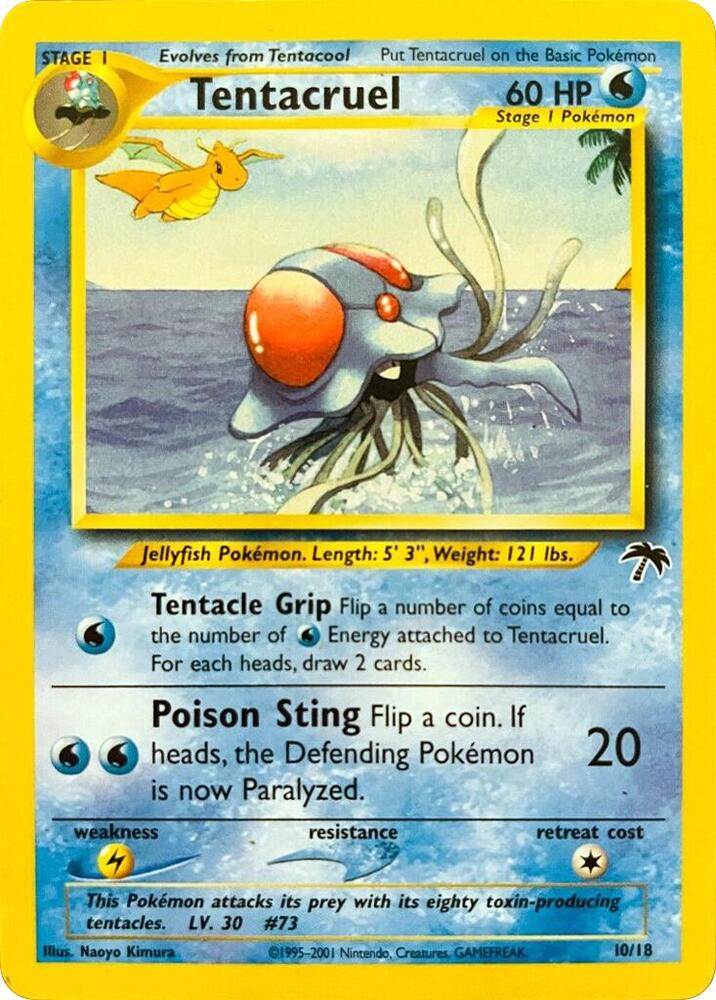
Tentacruel hovers gracefully near the waterline, its translucent body reflecting the pastel hues of the tropical ocean. The illustration’s depth and perspective give it a painterly quality uncommon for TCG cards of the era. This artwork demonstrates the set’s dedication to environmental storytelling rather than battle-centric imagery. It’s often cited by collectors as one of the best examples of non-holo artistry in early Pokémon prints.
12. Pidgeot 02/18
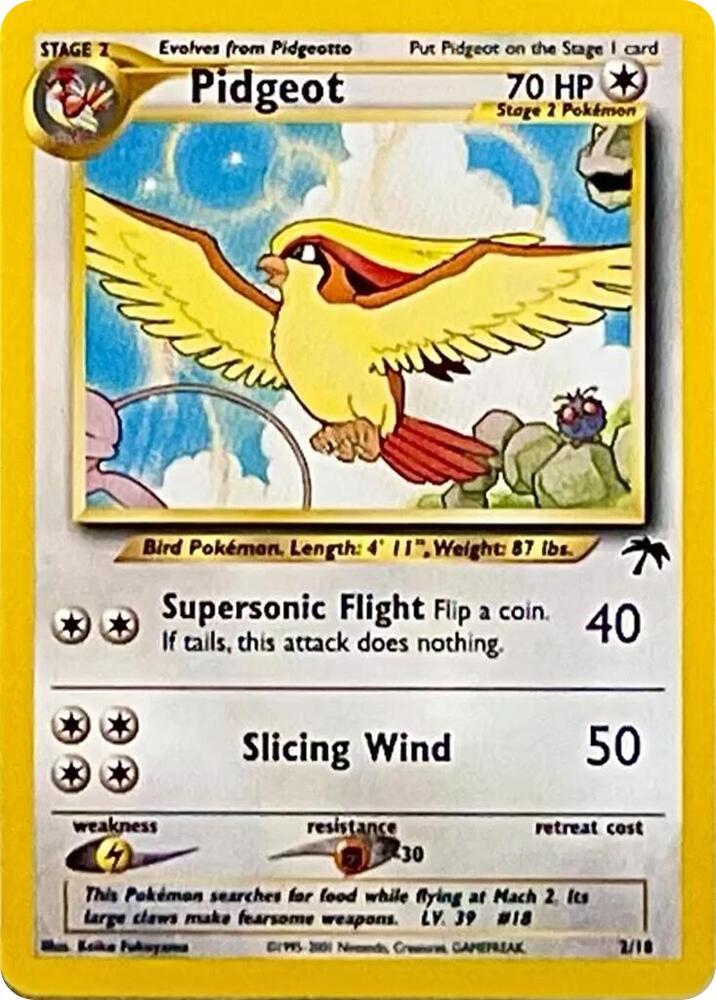
Pidgeot soars above the Southern Islands canopy, its wings spanning across the shared illustration with Onix and Jigglypuff. The card’s dynamic pose adds motion to the peaceful Tropical Island trio. Collectors admire how its design merges freedom and exploration, key themes of the collection. Mint-condition Pidgeot cards remain moderately rare, as binder wear often affects the glossy finish.
11. Onix 03/18
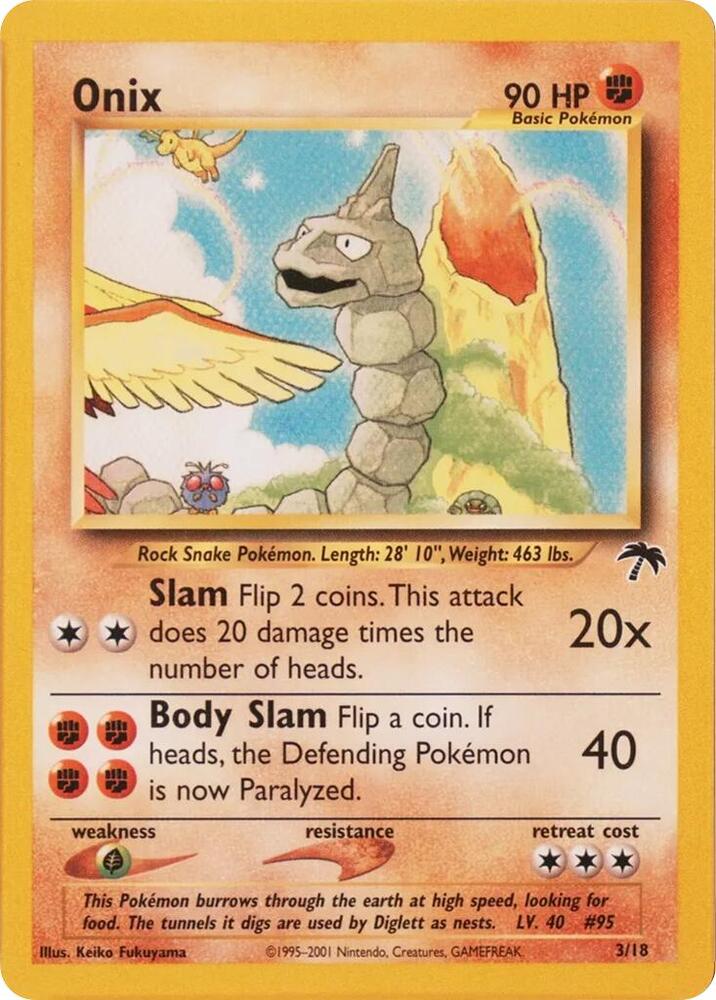
Onix appears rising from rocky terrain, bringing a bold contrast to the otherwise lush setting. The card balances the tropical softness of the other scenes with rugged texture and earthy tones. Its placement in the continuous art links well with Pidgeot and Togepi, emphasizing environmental diversity across the island. Collectors view this Onix as one of the most artistic portrayals of the Pokémon’s scale from the vintage period.
10. Ledyba 07/18

Ledyba’s curious stance atop a flower petal adds gentle charm to the collection’s central panorama. This was one of the earliest English appearances for the Pokémon, predating its mainstream debut in later Neo sets. The card’s warm tones and delicate outlines show the care given to even minor Pokémon in the series. Graded copies often appeal to collectors seeking early Johto-era representation in vintage form.
9. Jigglypuff 08/18
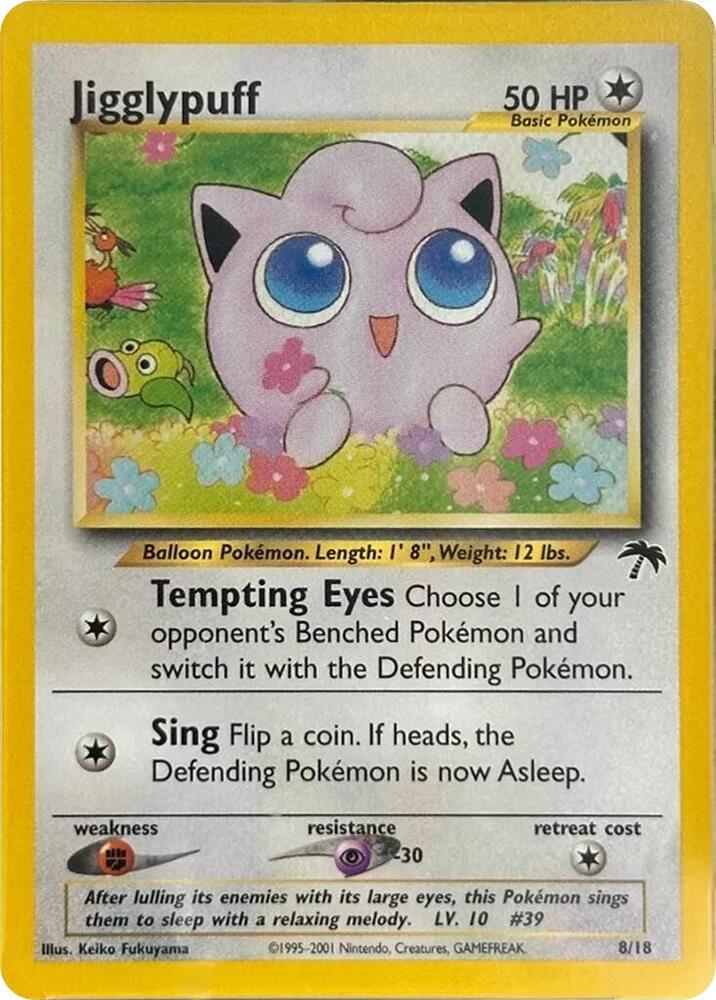
Jigglypuff lounges among flowers with a relaxed expression, complementing the overall theme of harmony with nature. Its color palette blends seamlessly with Butterfree and Ledyba, forming a beautifully soft middle section of the Tropical Island art. The artwork by Kagemaru Himeno is particularly admired for its round, expressive shapes. It remains a fan favorite for collectors drawn to Pokémon’s lighter, playful side.
8. Ivysaur 05/18
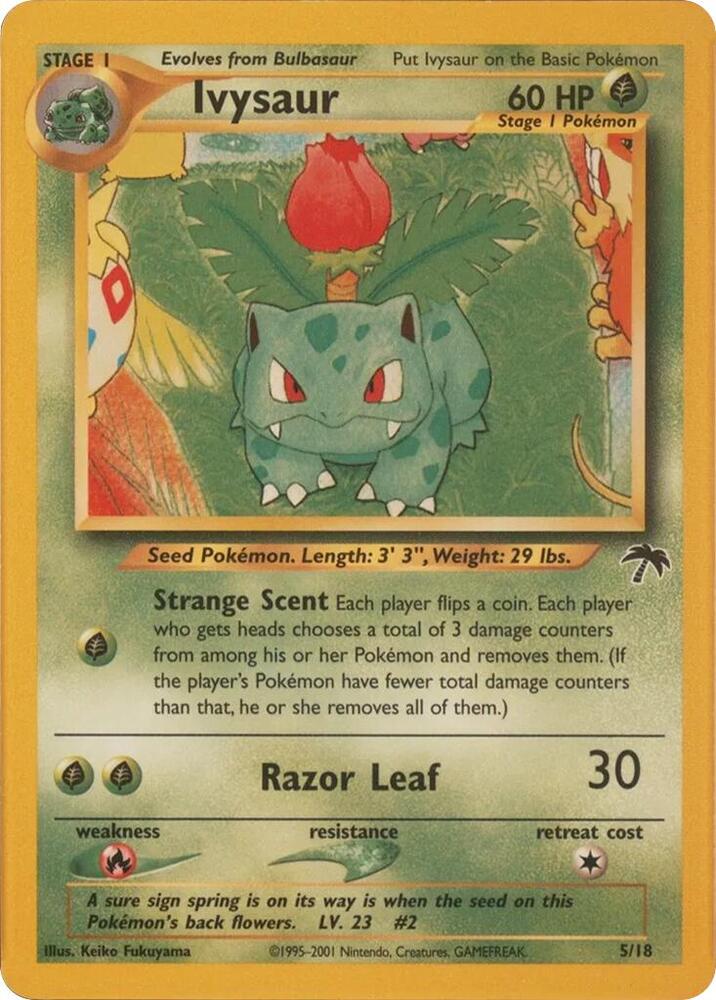
Ivysaur stands in a tropical meadow, surrounded by foliage that blends perfectly with the set’s unified scenery. Its depiction is peaceful rather than fierce, showcasing a nurturing aspect of the Pokémon rarely seen in early cards. This card pairs directly with Raticate and Togepi to complete one of the three postcard scenes. As a starter evolution, it adds depth to the collection’s character mix, appealing to both nostalgic and art-focused collectors.
7. Wartortle 15/18
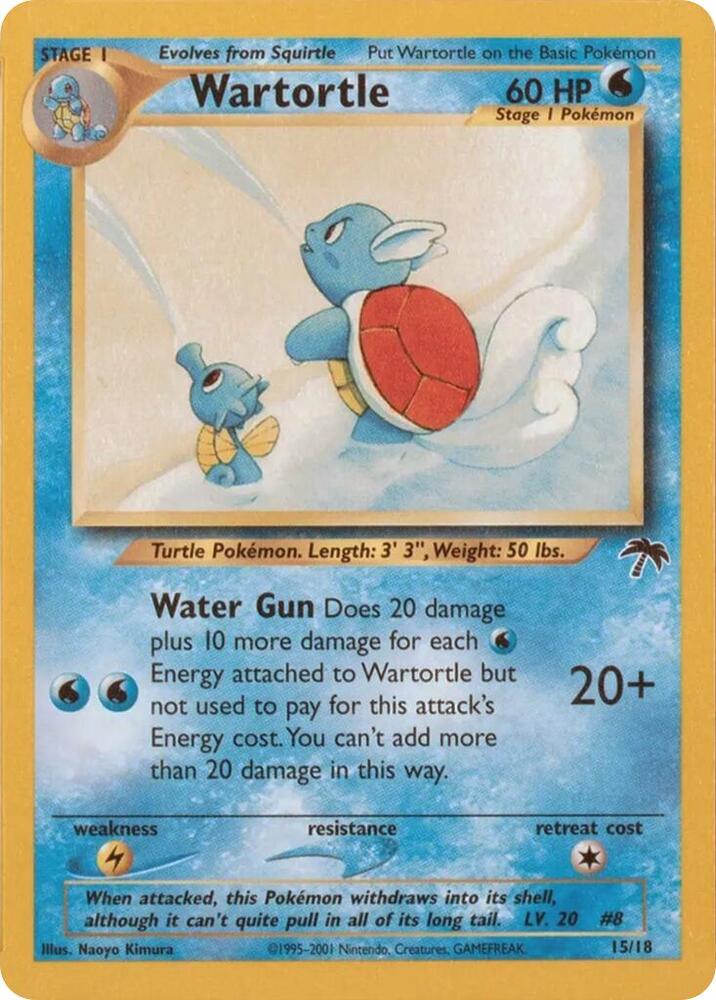
Wartortle’s relaxed pose on the water surface adds balance to the vibrant composition of Rainbow Island. Its calm demeanor, combined with shimmering reflections, exemplifies the tranquil tone of the set. This card is known for strong centering issues, making mint examples valuable to grading enthusiasts. It also complements Lapras and Slowking in building the coastal visual flow of the binder layout.
6. Lapras 12/18
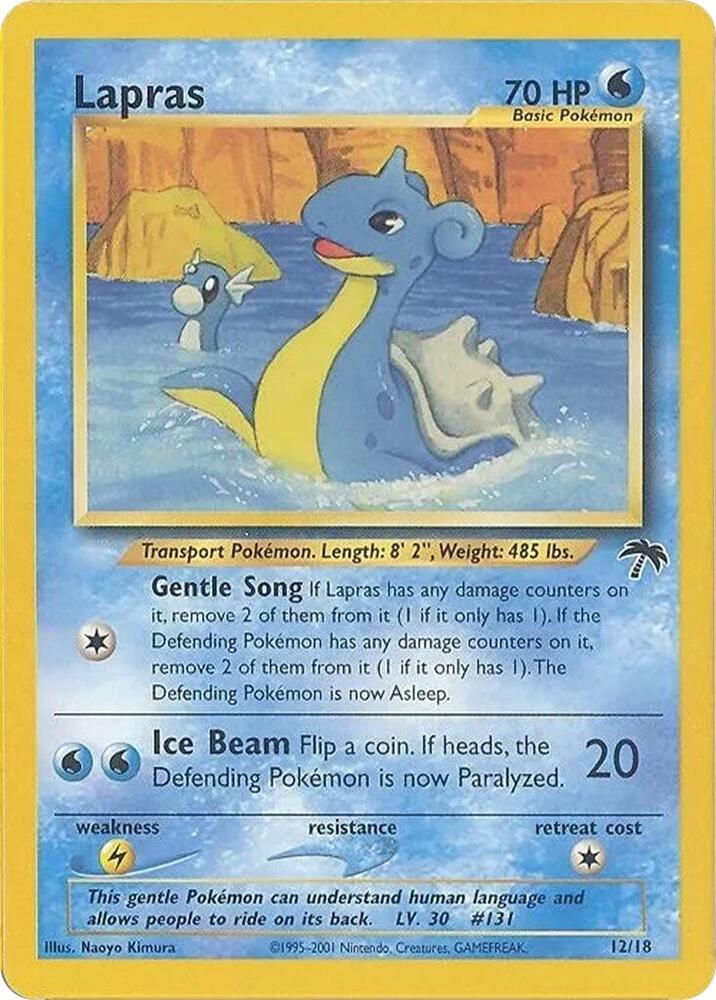
Lapras glides elegantly through clear blue waters, representing the peaceful heart of the Rainbow Island theme. Though non-holo, the art feels radiant due to its clean color transitions and perspective depth. It’s one of the most beloved cards from the set for its serene expression and idyllic scenery. Collectors consider Lapras a symbolic piece of the Southern Islands’ gentle storytelling approach.
5. Vileplume 17/18

Vileplume’s large blossom dominates the frame, surrounded by tropical leaves and filtered sunlight. The artist’s attention to color and texture makes this one of the most striking non-holo cards in the mini-set. Its connection to Exeggutor and Lickitung creates a cohesive lower-row jungle scene. Graded examples often serve as key display pieces within full binders.
4. Marill 11/18
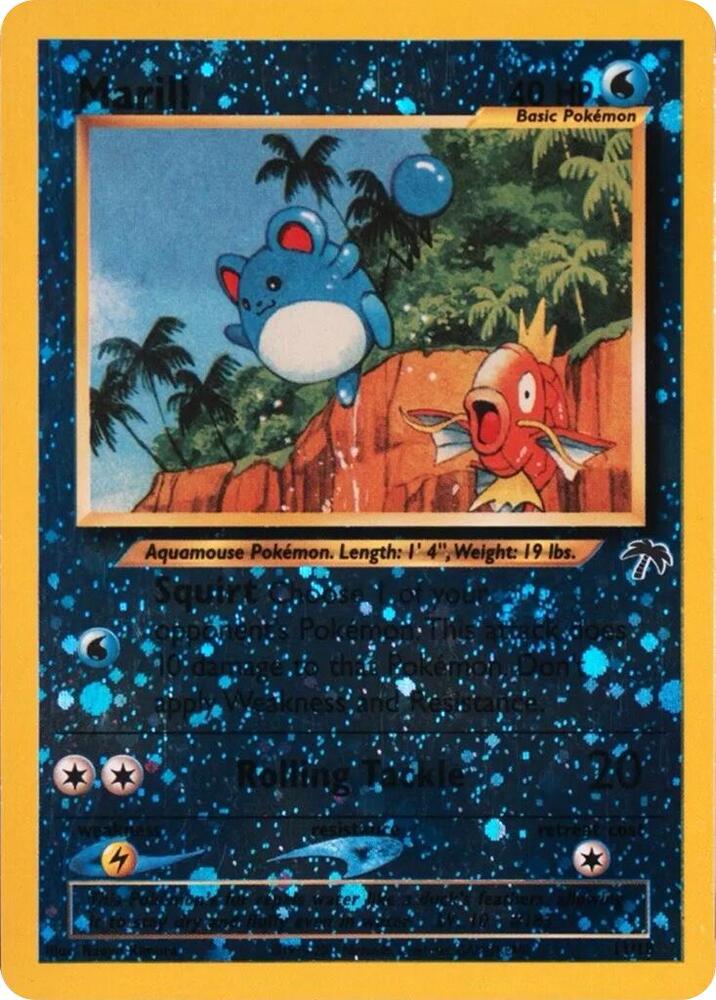
Marill’s appearance in the Southern Islands was its first English release before the Neo Genesis set. The card depicts Marill near a lagoon, interacting playfully with the surrounding scenery. Its simple yet joyful design captures the essence of early Johto introductions in a Kanto-inspired setting. Because of its pre-mainline debut, it remains a historically important and desirable card for collectors.
3. Togepi 04/18

Togepi’s innocent expression and central placement make it one of the collection’s emotional highlights. The artwork presents Togepi nestled among flowers, surrounded by sunlight and soft tones. As another early English debut for a Johto Pokémon, it holds major collector appeal. The card’s nostalgic charm and symbolic purity have helped it remain one of the top non-holo favorites in the set.
2. Slowking 14/18

Slowking appears near a tide pool, gazing toward the horizon with an almost philosophical expression. This illustration bridges Wartortle and Lickitung, completing one of the set’s best continuous water scenes. Its rare inclusion before Slowking’s widespread Neo debut adds historical weight for collectors. The card’s atmosphere and color palette give it enduring appeal in both Japanese and English versions.
1. Mew 01/18

Mew serves as the centerpiece and only holographic card of the Southern Islands Collection. Its gentle pose against a rainbow background embodies the set’s theme of harmony and wonder. The foil treatment and panoramic integration make it one of the most visually recognizable cards in early Pokémon history. Graded Mew cards consistently rank among the most valuable and sought-after vintage non-expansion prints.
The Pokémon Southern Islands Collection remains a masterpiece of design and nostalgia, perfectly capturing the spirit of the late 1990s TCG era. For collectors, its beauty, rarity, and historical significance make it one of the most rewarding vintage sets to own and display.

Disclaimer: eBay links on this page use a referral system that helps support the content—at no extra cost to you.

